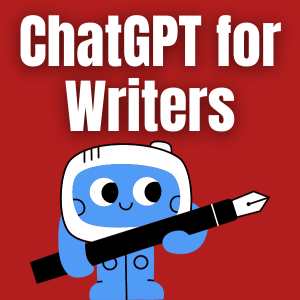Transform your writing practice by using ChatGPT as a dynamic tool for style experimentation. Describe the tone or style you’re considering for your project, whether it’s formal, informal, humorous, or poetic.
Engage in a conversation with ChatGPT, guiding it to respond in a manner that aligns with your desired style. For example, if you’re aiming for a lighthearted tone in a comedic piece, initiate a playful dialogue with ChatGPT.
Experiment with sentence structures, word choices, and the overall rhythm of the conversation. Alternatively, if you’re exploring a more formal tone for a business proposal or academic paper, guide ChatGPT to respond with clarity and professionalism.
This interactive process enables you to witness different writing styles in action, helping you identify the voice that best suits your project. It’s a valuable way to refine your own writing style, discover new approaches, and ensure that your narrative voice resonates with the tone you want to convey.
Exploring language and style with ChatGPT prompts can be a creative and insightful exercise. Here’s a guide on how to use prompts for language and style exploration:
Define the Purpose:
Clarify the purpose of your exploration. Are you looking to experiment with a specific writing style, tone, or language element? Understanding your goal will guide your prompts.
Specify Writing Style or Element:
Clearly state the writing style, tone, or language element you want to explore. For example, you might want to experiment with formal language, conversational tone, humor, or poetic language.
Experiment with Tone:
If you want to explore different tones, craft prompts that specify the emotional or rhetorical tone you’re interested in. For instance, “Write a paragraph with a humorous tone” or “Create a passage with a somber and reflective tone.”
Play with Word Choice:
Explore different word choices by asking for synonyms or alternative expressions. For example, “Provide alternative words for ‘happy’ that convey different shades of emotion.”
Practice Descriptive Language:
If you want to enhance descriptive language, ask for vivid and detailed descriptions. For instance, “Describe a sunset using rich and evocative language.”
Create Style Mash-ups:
Combine different styles or genres to create interesting blends. For example, “Write a paragraph that combines elements of science fiction and romantic prose.”
Experiment with Sentence Structure:
Explore variations in sentence structure. You can ask for sentences of varying lengths, complexities, or structures to add dynamism to your writing.
Specify a Genre:
If you have a specific genre in mind, tailor your prompts accordingly. For instance, “Write a mystery scene with a twist” or “Craft a fantasy dialogue between two characters.”
Ask for Poetic Imagery:
If you’re interested in poetic language, ask for imagery and metaphors. For example, “Create a metaphor for the passage of time using natural elements.”
Explore Cultural Nuances:
If you want to incorporate cultural nuances, ask for expressions, idioms, or phrases specific to a particular culture or region.
Play with Rhythm and Flow:
Experiment with the rhythm and flow of your writing. You can ask for sentences with a specific rhythm or flow, such as “Write a sentence with a rapid and energetic rhythm.”
Challenge with Constraints:
Set constraints to challenge yourself. For example, “Write a paragraph without using the letter ‘e'” or “Craft a dialogue using only one-syllable words.”
Revise and Iterate:
If the initial response doesn’t fully capture the writing style you’re exploring, iterate and refine your prompts. Ask for revisions or more specific examples.
Combine Styles:
Combine contrasting writing styles or tones within the same prompt. For example, “Write a paragraph that begins with a serious tone and transitions into humor.”
Reflect and Analyze:
After receiving responses, reflect on the language and style choices made by the model. Analyze what works well and consider how you can incorporate these elements into your writing.
ChatGPT Prompts for Exploring Language & Style
- “Craft a paragraph with a formal and academic tone discussing the impact of technology on modern society.”
- “Write a dialogue between two characters in a suspenseful and mysterious style.”
- “Create a passage with a nostalgic and reflective tone, reminiscing about a past experience.”
- “Experiment with poetic language and describe the beauty of a moonlit night.”
- “Craft a paragraph with a persuasive and convincing tone, advocating for the importance of environmental conservation.”
Remember to approach this exploration as a creative exercise, and feel free to adapt the prompts based on your specific interests and goals.
How to Use ChatGPT for Writers

Discover more from Business & Branding Tips
Subscribe to get the latest posts sent to your email.

